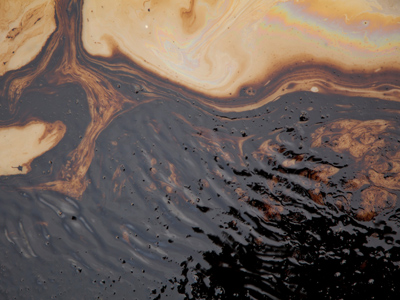
Ask the AI Tutor
Need help with Chemistry - Hydrocarbons and Fuels (AQA)? Ask our AI Tutor!
AI Tutor - Lucy
Connecting with Tutor...
Please wait while we establish connection

Most of the compounds in crude oil are hydrocarbons.
Chemistry - Hydrocarbons and Fuels (AQA)
Hydrocarbons are key chemicals in fuels. In GCSE Chemistry you learn how their structure affects properties like burning, viscosity and everyday uses from car petrol to heating.
1 .
Which of the following is an alkane?
C2H2
C4H6
C6H12
C8H18
Testing to see if you know that the general formula for alkanes is CnH2n+2 where n is the number of carbon atoms in the hydrocarbon
2 .
There are environmental costs when using hydrocarbons as fuels. Using them in this way produces a number of pollutants. Which one of the following contributes to acid rain?
Carbon monoxide
Carbon dioxide
Methane
Sulfur dioxide
Whilst carbon dioxide does make rainwater slightly acidic, it is the sulfur dioxide (and nitrogen oxides) that takes the pH below 6, creating the acid rain
3 .
During the combustion of hydrocarbons, what happens to the carbon and hydrogen atoms?
They change into new elements
They are destroyed completely
They are reduced
They are oxidised
All combustion reactions involve oxidation of the atoms of the fuel
4 .
Some properties of hydrocarbons depend on the size of their molecules. These properties influence how hydrocarbons are used as fuels. A hydrocarbon with 30 carbon atoms is unlikely to be used as a fuel in vehicles. Why not?
Because it is a solid
Because it is a liquid
Because it is a gas
Because it is not possible to burn it
Liquids are the only practical fuels for vehicles
5 .
When we use hydrocarbons as fuels they produce particulates (small particles of solids e.g. soot). What environmental problem is caused by the release of these solids?
Global dimming
Global warming
Acid rain
Ozone depletion
They block some of the Sun's rays from reaching the surface of the Earth
6 .
Which of the following is not a product of burning hydrocarbons as fuels?
Carbon monoxide
Water vapour
Oxygen
Carbon dioxide
Oxygen is required for burning hydrocarbons as fuels
7 .
Soot is mainly particles of what?
Unburned hydrocarbons
Sulfur
Carbon
Solidified nitrogen oxides
Soot is a product of the incomplete combustion of hydrocarbons
8 .
What is a hydrocarbon?
A compound containing only hydrogen and carbon
A compound containing mainly hydrogen and carbon
A compound containing only hydrogen, carbon and oxygen
The only type of chemical that we ever use as a fuel
It's all in the name! Although hydrocarbons are probably the most important fuel we use, they are by no means the only one
9 .
Which of these is the correct equation for the complete combustion of propane?
CH4 + 2O2 → CO2 + H2 O
2C2 H4 + 6O2 → 2CO2 + 2H2 O
C3 H8 + 5O2 → 3CO2 + 4H2 O
2C3 H8 + 7O2 → 6CO + 8H2 O
You should have immediately dismissed the first two as they are not propane. The third and fourth answers are correctly balanced equations for propane but the fourth one shows the incomplete combustion of propane
10 .
16g of methane required 64g of oxygen to burn completely producing 44g of carbon dioxide. How many grams of water were produced?
72
44
36
22
The examiners could throw something like this at you in any question in order to test your knowledge of the law of conservation of mass in chemical reactions. To get the right answer, you only need to be able to add and subtract! Work out how many grams of chemical that you started with then look how many are missing at the end. That is your answer
You can find more about this topic by visiting BBC Bitesize - Crude oil, hydrocarbons and alkanes - AQA
**Unlimited Quizzes Await You! 🚀**
Hey there, quiz champ! 🌟 You've already tackled today's free questions.
Ready for more?
Ready for more?
🔓 Unlock UNLIMITED Quizzes and challenge yourself every day. But that's
not all...
not all...
🔥 As a Subscriber you can join our thrilling "Daily Streak" against other
quizzers. Try to win a coveted spot on our Hall of Fame Page.
quizzers. Try to win a coveted spot on our Hall of Fame Page.
Don't miss out! Join us now and keep the fun rolling. 🎉
**Unlimited Quizzes Await You! 🚀**
Hey there, quiz champ! 🌟 You've already tackled today's free questions. Ready for more?
🔓 Unlock UNLIMITED Quizzes and challenge yourself every day. But that's not all...
🔥 As a Subscriber you can join our thrilling "Daily Streak" against other quizzers. Try to win a coveted spot on our Hall of Fame Page.
Don't miss out! Join us now and keep the fun rolling. 🎉






